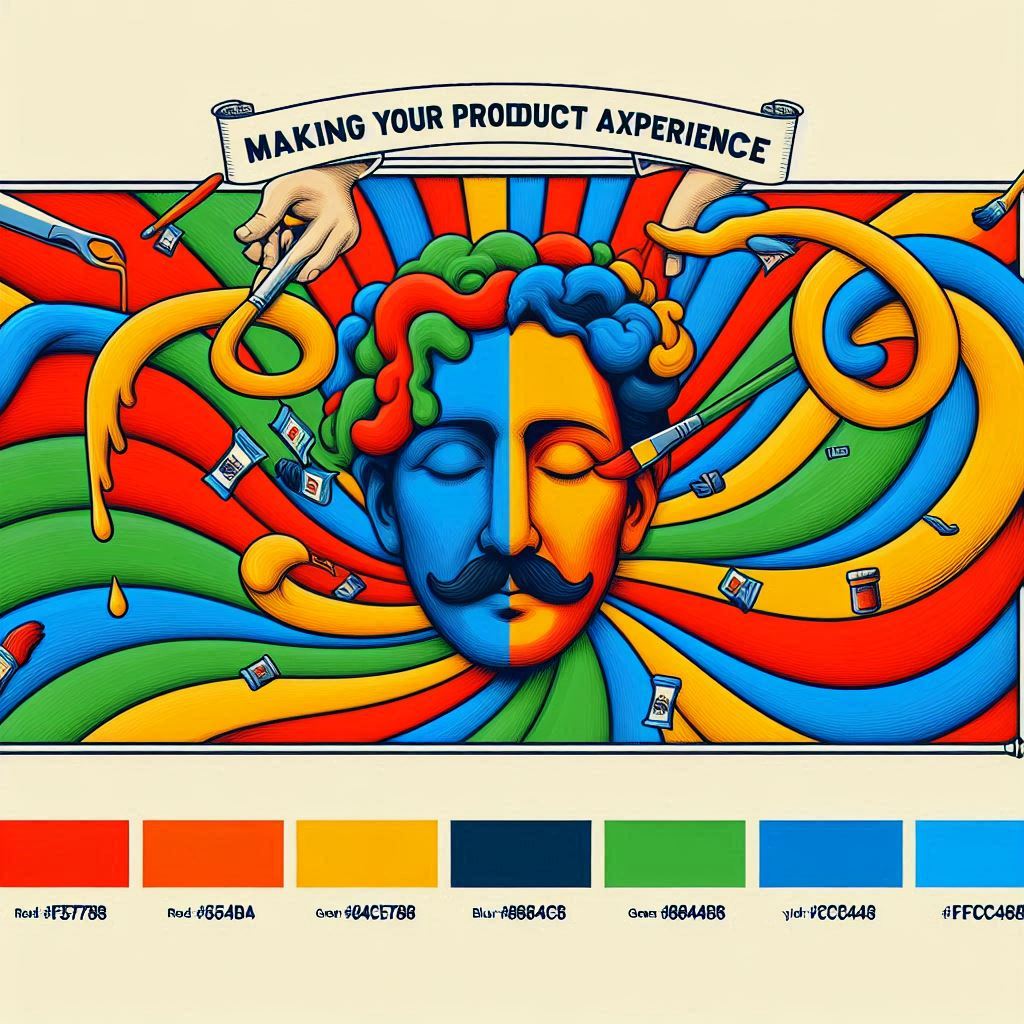Activating Product Benefits: A Simple Guide
Product benefits are important for marketing. Just listing them isn’t sufficient. You need to activate them for a real impact.
Our guide will take you through the steps to effectively activate product benefits and make them work for your brand. Whether you’re a small business owner or a marketing professional, these practical tips will help you unleash your products’ full potential and drive success for your business.
Getting Started with Product Activation
To activate a product, companies need to:
- Define their objectives
- Identify the target audience
- Select appropriate tactics to create a budget
- Plan and execute
- Measure results
- Continuously improve the strategy
Product activation involves understanding customer behavior and feedback to improve the experience continuously. Understanding customer preferences allows companies to guide users through the customer journey and prevent them from becoming inactive, ensuring increased engagement and satisfaction.
Customers can access product activation support through:
- Welcome email campaigns
- In-product support
- Feature updates
- Special offers
These methods aim to:
- Educate new users on how to get started
- Provide support if necessary
- Encourage inactive users to return through special offers
Chatting with Customers
Businesses can engage with customers through chat by providing timely and helpful responses to inquiries, which creates a positive customer experience. They can also make customers feel welcome and valued by using friendly and personalized language, expressing gratitude for choosing their product or service, and adopting a patient and attentive tone during chat interactions.
Additionally, businesses can personalize their chat interactions by addressing customers by name, remembering their previous interactions, recommending products or services based on their preferences, and offering customized solutions to their concerns. These strategies contribute to a tailored and customer-centric approach, enhancing the chat experience and strengthening customer relationships.
Making Your Brand Easier to See
Businesses can make their brand easier to see by using different strategies to boost brand recognition. They can do this by hosting live events and product launches and partnering with influencers to create memorable experiences that connect with consumers and make the brand stand out. Social media campaigns and pop-up stores also help improve brand visibility and connect with potential customers.
Through careful planning and execution, businesses can ensure their brand is more visible and easily recognized in a crowded market, ultimately boosting sales and brand exposure.
Advanced Person Search can be a powerful tool in these efforts, helping businesses identify and understand their target audience more effectively. This tool allows companies to tailor their marketing strategies to meet their customers’ needs more precisely, leading to better engagement and higher conversion rates.
Growing Your Business on Purpose
Brand activation techniques can help businesses connect with their target audience. These techniques involve creating experiences through live events, product launches, influencer partnerships, and social media campaigns. These activities help businesses stay true to their mission and values while driving intentional and purpose-driven growth.
Businesses can increase brand awareness, customer loyalty, and sales by improving consumer engagement and forming a stronger emotional connection with the brand.
To measure success, businesses should track consumer engagement, brand exposure, sales revenue, customer feedback, and social media presence. By analyzing these metrics, businesses can continuously improve their brand activation strategy and achieve strategic growth.
Ways to Get People Excited About Your Brand
Having Events at Trade Shows

Trade shows offer a variety of events that can effectively engage attendees. These include live product demonstrations, celebrity appearances, interactive workshops, and networking opportunities.
These events showcase the brand’s products or services and provide potential customers with a memorable and impactful experience. They create an emotional connection and leave a lasting impression.
By strategically planning and executing events at trade shows, businesses can:
- Increase brand visibility
- Attract new business opportunities
- Differentiate themselves from competitors
Strategies such as partnering with industry influencers, implementing innovative event design and technology, and leveraging social media to promote the events can further enhance the brand’s presence and generate leads.
Overall, events at trade shows serve as a valuable platform for businesses to:
- Actively engage with their target audience
- Drive brand awareness
- Boost sales and customer loyalty
Talking to People Right Where You Are

You can engage with people in your location to promote your brand or business by creating immersive experiences and activities. This can bring your brand to life and improve consumer engagement. Live events, product demonstrations, pop-up stores, and social media campaigns are effective ways to do this. Special offers and incentives can also persuade potential customers to interact with your brand and experience its full benefits.
To create a welcoming experience for potential customers, you can strategically use in-product support and run welcome email campaigns. These can guide users through the customer journey and show them how valuable your product or service is. Providing feature updates and offering special discounts on the cost of upgrading can encourage customer engagement and build brand loyalty.
To communicate effectively with people in your local community or at events, you can set up an in-product learning solution that guides them as they navigate your product. This can help identify opportunities to improve their experience and address their doubts, showcasing how your solution can make their lives easier.
Letting People Try Things for Free

Free trials or samples can increase customer interest in a product or service. They allow potential buyers to experience the product firsthand, providing insight into its benefits and unique selling proposition. They also help users understand its value and ease of use.
Showcasing the product’s features and functionality in a real-world context can convince users that it provides tangible benefits and addresses their needs.
Free trials or samples also help build trust. Customers can verify the product’s quality and performance before purchasing. However, offering products for free may attract users who are not genuinely interested in the product. This can lead to high acquisition costs and low conversion rates.
Making Your Product an Experience

Businesses can use their products to create a memorable experience for customers. They can use live events, product launches, influencer partnerships, and social media campaigns. These activities aim to improve consumer engagement and create a strong emotional connection with the brand, increasing brand awareness, consumer loyalty, and sales.
Additionally, these activities can result in valuable customer insights, improved reputation, and a stronger social media presence. By connecting with the audience and creating immersive experiences, businesses can drive sales, differentiate themselves, and stand out in the market for strategic growth and long-term success.
Helping New Customers Feel at Home
Help in the Product
The product can provide onboarding experiences to help new customers feel more comfortable. These experiences guide users through the product’s features and functionalities. In-product learning solutions, knowledge bases, and easily searchable information are readily available to new users.
Additionally, in-product support like hotspots and tooltips offer valuable information at key moments in the customer journey.
Various strategies can be implemented to enhance customers’ experience by keeping them updated on the product’s features. These include sending welcome email campaigns, providing feature updates through emails or pop-ups, and communicating special offers and incentives to encourage user engagement. A sequence of emails can guide new users through the onboarding process and prompt actions to reactivate inactive customers.
Special deals and offers can be used to reach out to users and encourage them to become more active. Incentivizing new and inactive users with special discounts, free credits, and a welcoming email sequence can boost user engagement and lead to customer activation. Moreover, communicating with inactive customers to understand their needs and challenges provides an opportunity to offer tailored solutions and re-engage them with the product.
Saying Hi with Welcome Emails
Welcome emails are used to make new customers feel welcomed and valued. They provide a warm and positive introduction to the brand and its products. This initial communication sets the tone for the customer’s experience and reassures them that their decision to engage with the brand was right.
Effective strategies for using welcome emails include:
- Providing a clear and concise overview of the brand’s unique selling proposition
- Guiding customers through the onboarding process
- Offering easily accessible support resources
Moreover, welcome emails can keep new customers engaged and interested by setting up triggers to send follow-up emails. These emails can offer assistance and provide necessary information to overcome any barriers to engagement.
Keeping Customers Updated on Features
Businesses can communicate updates and new features to customers in several effective ways:
- Sending out emails.
- Creating ‘What’s New’ pop-ups.
- Adding subtle tooltips to guide customers through new features.
In addition, running welcome email campaigns can help new users interact with the product and educate them on finding support if needed. Providing special offers such as free credits or discounts on product upgrades ensures that customers know about special deals and promotions related to new features. This incentivizes both new and inactive users and encourages them to experience the product or service’s value fully.
Special Deals Just for Users
Users would like exclusive special deals. These could include discounts, free credits, or a discount on upgrading. To make the deals more valuable, the company could also offer personalized bundles, incentives, targeted email offers based on purchase history, or loyalty points for exclusive rewards. Tailoring offers for specific user segments, such as frequent buyers, inactive users, or those interested in specific product features, can ensure the deals resonate with each group.
For example, frequent buyers could receive product-related deals, inactive users could get re-engagement incentives, and users interested in specific product aspects could receive feature-specific promotions. This way, the company can maximize the benefits for all users by tailoring special deals based on user behavior and preferences.
Reaching Out to Customers Who Aren’t Active
Businesses can re-engage inactive customers by using various strategies.
For example, they can run a welcome email campaign to guide them on how to get started and where to find support. Providing feature updates to inform customers about the latest features and offering special deals, like free credits or discounts, can incentivize their return. Effective communication can be achieved by offering assistance through email or reaching out to understand the reasons behind the inactivity. This provides an opportunity to save the customer and demonstrate how the product can make their lives easier.

Vizologi is a revolutionary AI-generated business strategy tool that offers its users access to advanced features to create and refine start-up ideas quickly.
It generates limitless business ideas, gains insights on markets and competitors, and automates business plan creation.


